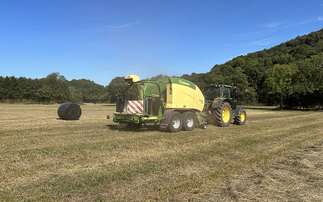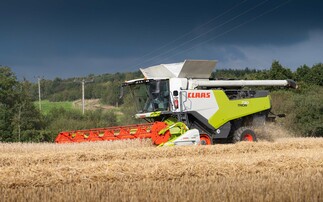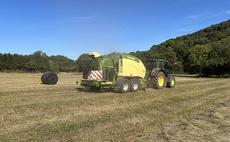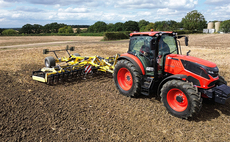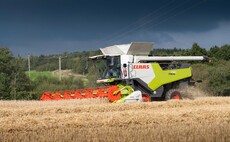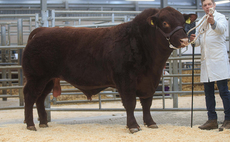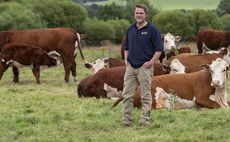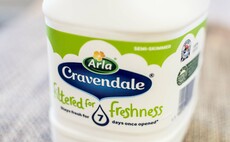
Moving away from the ‘big five' tractor brands could offer value for money in these cost-sensitive times, suggests one Chippenham-based farming business. Jane Carley finds out how the business is getting on with a fleet of Kubotas.
Not making obvious choices is proving to be a successful mantra for Chippenham, Wiltshire family farm J D Spencer and Sons when it comes to buying tractors.
"We have five farms run by four family partners, and a few years ago my uncle had a serious accident on one of our existing tractors. We needed to replace the tractor and it led to a rethink," explains partner Henry Spencer. "It had been a while since we had purchased a tractor and we were shocked at how much the prices had increased; it did not seem to make any sense that we were getting less for our produce but paying more for machinery."
A college friend was working for Kubota and suggested a demo of the M7 Series tractor, which appealed to Mr Spencer's wish to ‘try something different'.
"The option of a five-year warranty, which was not widely available at the time, was also attractive, and I thought that if we could get a competitive price it might work for us."
The opportunity arose to secure two high specification ex-demonstration tractors in 2018.
"The more I looked into the background of Kubota and their profile as a company, the more sense it made," he explains. "This has been reflected in the amount of support we have had from them since, including a team from Japan who have visited the farm and taken our feedback on board."
After 18 months with the 150hp M7.151 and 170hp M7.171, Mr Spencer added another pair of Kubotas from the next generation, as other tractors in the fleet came up for replacement.
For the mixed farming operation, which includes 340ha of crops - 250ha of winter wheat, 85ha of grass leys and 104ha of maize - the tractors are a perfect fit, he points out.
"We can use them for a whole range of jobs, from ploughing to muck spreading, topping and hedgecutting. The power to weight ratio is excellent, and they are nice and compact so I am not constantly knocking off wing mirrors. Most of the land is flat, but we rent some from the Badminton estate which is hilly and we have narrow gateways to negotiate."
Two different specifications add versatility; in spring the M7.151 and M7152 are kept busy with ploughing ahead of the drill, with their 6.1-litre Kubota, four-cylinder engines offering the muscle to manage a five-furrow Overum plough while maintaining fuel efficiency, Mr Spencer suggests. He reckons to use 38-40 litres of diesel per hour on a thirsty implement such as the farm's 5m Brevi power harrow. He also makes 500 round bales of silage, 2,000 of hay and 4,000 of straw each year.
"The two bigger tractors have a stepless transmission which is ideal on the baler and also on the fertiliser spinner as you can make use of the easy to adjust variable speed. It is also more pleasant to use on the road."
He adds that the Kubotas replaced slightly higher-powered tractors, which was a concern in the planning stages, but he finds that the engines offer plenty of torque. "The Kubota engines themselves were actually a selling point as they are renowned for reliability, so that was never an issue. We can put a 9.5m plain cut triple mower on the 175hp models and although 200hp would probably be better, performance is fine."
Lift capacity is another positive, he points out. "We have got over nine tonnes on the rear linkage and four on the front, and they are really strong and well built. The tractors are also well balanced with good geometry for implements - with a power harrow on the back you'd expect the front of the tractor to be light, but they feel very safe on the road with a mounted implement."
Kubota's purchase of the Kverneland group brought some useful tech, and Mr Spencer praises the IsoBus terminals, with the M7171 and M7172 featuring the large format K-monitor.
"It is quite intuitive. My father and uncle can get in the tractor and operate it, while they were a bit foxed by some of our other tractors. There is a two-step headland management feature which is very useful as you can set the sequences for lifting and lowering front and rear mounted implements separately.
"But the spools, linkage, diff-lock and pto controls are also ergonomic, and it is handy to be able to operate them from levers and switches rather than having to use the screen if you just want to jump in the tractor quickly, or you have got casual labour using the tractor at harvest."
Mr Spencer comments that there was a noticeable advance in equipment and finish between the two generations of tractor. "There is still room for more improvement; it is all very durable and functional which appeals to me as a farmer, but I appreciate that some owner-operators might prefer a bit more refinement.
"While the cab doors, for example, are light, which actually makes it easier when you are jumping in and out, there is solid build where you need it, such as the hitch, which is a push out hydraulic design," comments Mr Spencer.
For a manufacturer that is a relative newcomer to the sector, there have been few issues, he reports. "And if Kubota addresses a fault it does not seem to recur - we had solenoids replaced on the front suspension, for example, and they have not been a problem since."
Some developments were less positive, he says: "The first series have a double check chain on the linkage; this went to one, with a spring on the hydraulic arm on the opposite side for series 2; not ideal when the bolt on the single check chain broke. But I understand they have returned to double chains on the most recent version."
Major servicing is carried out under warranty but everyday maintenance accessibility gets the thumbs up, apart from a mysterious grease nipple between the axle and transmission that requires some gymnastics to attend to.
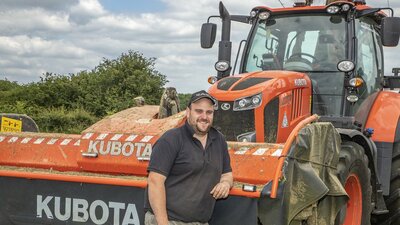

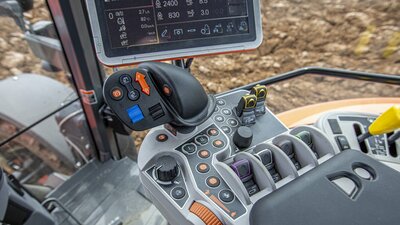
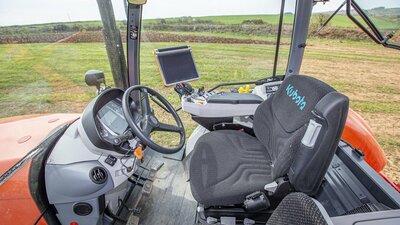
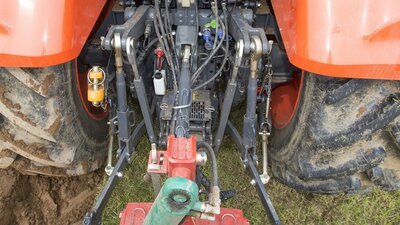
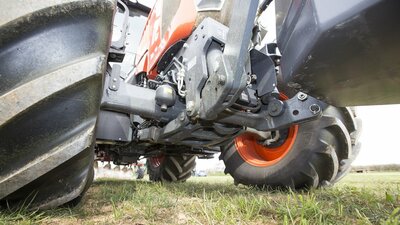
Verdict
Overall, it has been a happy journey with the Kubota tractors and one that he plans to continue. "I can see a future for these tractors; we are putting 1,200 hours a year on them and would normally aim to swap a tractor at 5,000 hours, although that depends on the circumstances.
"I would be keen to go to 200hp when it happens for Kubota, and it would not have to be a six-cylinder engine as they are surprisingly torquey. We have seen that they can punch above their weight in many ways."










